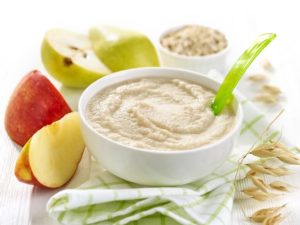But once the stress of childbirth is over, the next worry plagues most mothers: they fear they won’t produce enough breast milk. What many don’t know: Insufficient breast milk is often just a result of incorrect breastfeeding techniques. With a few simple tips and tricks, milk production can be stimulated.
Table of contents
How Does Milk Production Work?
The hormone prolactin, which is needed later for milk production, is already produced during pregnancy. During pregnancy, however, the high levels of the two hormones estrogen and progesterone prevent prolactin from working.
Only after birth does the production of the two hormones decrease, and the baby’s suckling causes prolactin to be released. In addition, another hormone is released during breastfeeding – oxytocin. Oxytocin is also known as the bonding or cuddling hormone, and during breastfeeding, it ensures that breast milk is expressed and transported further.
Apart from this, it has the function of triggering thirst in the breastfeeding mother. This is because sufficient fluid intake is essential for milk production.
What Are The Reasons For Insufficient Breast Milk?
Many mothers who produce too little milk tend to wean prematurely. However, this problem can often be easily solved and there are ways to stimulate milk production.
Rather Rare Reasons Of Insufficient Milk Production Are:
- A complicated birth.
- A shortened lingual frenulum of the baby.
- A nutritional deficit on the part of the mother.
- An illness of the child.
In Most Cases, It Is Due To Simple Things, Such As:
- Stress.
- Incorrect breastfeeding position.
- Lack of rest during breastfeeding.
Also, in the first few days after delivery, it is normal to produce less milk. By the 4th day after delivery, milk production is increased to about 500 ml. After about 4 weeks, the baby will already have 750 ml of milk available.
If there is premature birth, the baby cannot be breastfed directly because it is then first admitted to the intensive care unit. Therefore, in this situation, it is important to pump breast milk no later than 4-6 hours after delivery. In addition, a breast massage can stimulate milk production, because it is not activated by the baby’s sucking.
Regular pumping or emptying by hand will then ensure that milk production is maintained until the baby is ready for breastfeeding.
How Do I Determine That Too Little Milk Is Being Produced?
First of all, I would like to clarify something here: Breast size has absolutely no correlation with the amount of milk production. Even small breasts produce enough milk!
Before you stress unnecessarily about whether enough milk is being produced, you need to determine if it really is the case or if it just feels that way.
Here Are Some Parameters By Which You Can Tell That Your Milk Production Is Perfectly Adequate:
- Your baby is awake and alert and has rosy skin.
- He/she is gaining weight (about 20 g/day or 140 g/week).
- The diapers are regularly full; the amount of urine also increases.
- If the stool changes from meconium to a mushy, yellow stool during the first week.
- Your baby shows signs of hunger before breastfeeding, such as restlessness and crying.
- After breastfeeding, he shows signs of satiety, is satisfied and calm.
Tips And Tricks To Stimulate Milk Production
The Right Breastfeeding Position
The baby’s sucking reflex is responsible for stimulating your milk production. For this reason, it is important that you enable your baby to suckle correctly. If this is not possible, change and correct the breastfeeding position.
Let Your Baby Drink Until He Or She Is Full
Proper latching on, prolonging breastfeeding (at least 15 minutes), and increasing the frequency of breastfeeding stimulate milk production.
In the first two weeks after birth, your baby should drink 8-10 times in 24 hours, or about every 3 hours. In general, you should let your baby drink as long as he or she wants and also offer both breasts.
Healthy Nutrition And Sufficient Fluids
You can do something for your milk production yourself. Eat a healthy, balanced diet and drink at least 2 liters a day. Milk-binding agents, such as malt beer and fenugreek seeds, and foods high in carbohydrates and vitamin B can stimulate milk production.
Relaxation And Rest
Lots of skin-to-skin contact with your baby, i.e., intense cuddling, produces oxytocin. Also, it is good for both you and your baby if you are relaxed and calm. So make yourself comfortable, turn on your favorite music and create a pleasant atmosphere. Also, make sure you take care of your nipples so they don’t get sore.
Pumping
Regular and complete expressions are important for milk production. Therefore, you can also pump after breastfeeding to ensure that both breasts are emptied equally. You can also massage your breasts.
Breastfeeding Tea
Teas with fennel, anise, caraway, fenugreek, and honeysuckle are said to have a milk-forming effect. These special breastfeeding teas can be found in any drugstore. The negative effects of breastfeeding teas are not known, but they are said to have a placebo effect. In my eyes, it does not matter, as long as it helps (whether really or yet only the placebo effect).
Medicines That Stimulate Milk Production
If all this doesn’t help, you can ask your doctor to prescribe you a medicine that stimulates milk production.













1 thought on “Stimulate Milk Production – Reasons For Milk Deficiency And How You Can Stimulate Milk Production”